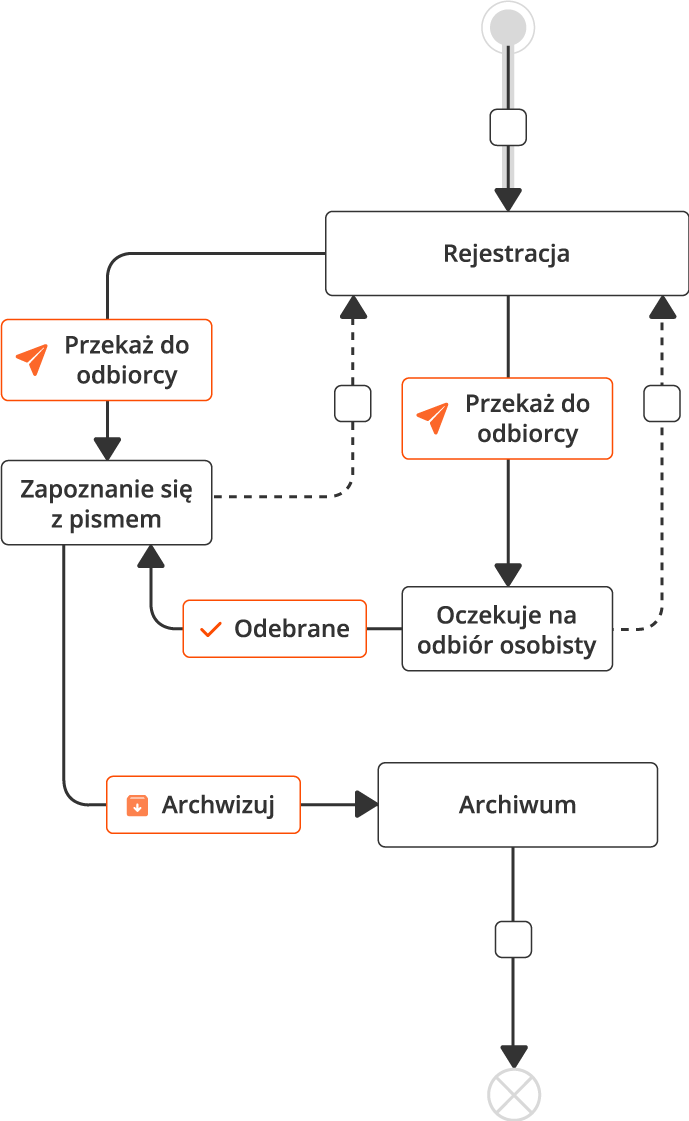
EDW - Electronic Document Workflow - AMODIT
Electronic Document Workflow (EDW) is an advanced management system that transforms how companies handle documentation. By digitizing, automating, and centralizing document workflow – from invoices to employee requests – EDW improves operational efficiency and enhances data security.

Who is EDW for?
Electronic Document Workflow (EDW) is ideal for companies of all sizes looking to streamline business processes and boost productivity. It is especially beneficial for organizations that process large volumes of documentation such as invoices, contracts, or employee requests. This system is also essential for businesses operating in remote or hybrid environments, where quick access to electronic documents is critical. Whether managing financial, HR, or project documentation, EDW helps enterprises stay compliant with legal regulations while improving interdepartmental collaboration and enhancing data security.
Why EDW?
Electronic Document Workflow (EDW) reduces the time required for processing and approving documents, allowing businesses to automate routine tasks like invoice circulation and leave requests. This minimizes human error and increases overall efficiency. By centralizing documentation in electronic form, EDW improves organization and provides easier access to critical information, simplifying decision-making across the company. EDW safeguards your data from loss or damage while offering controlled access to sensitive documents. This ensures compliance with ever-evolving legal regulations regarding document storage and security.
Benefits of Implementing Electronic Document Workflow (EDW)
Electronic Document Workflow stands apart from traditional methods due to its speed, information accessibility and efficiency. Explore how your company can benefit:
Faster Processing and Approvals
EDW drastically reduces the time required to process and approve documents. Tasks that once took days can now be completed in hours, boosting overall efficiency and streamlining operations. This results in faster decision-making and smoother business processes across the organization.
Automation of Processes
Automating tasks like invoice approvals and leave requests minimizes the risk of human error and speeds up decision-making. Employees can focus on strategic, high-value work instead of repetitive, time-consuming tasks, enhancing productivity.
Advanced Analytics and Monitoring
EDW provides powerful analytical tools that allow businesses to monitor document flow and process performance in real time. This allows organizations to better understand and optimize their business processes.
Reduced Operational Costs
Moving to an electronic document system cuts costs associated with printing, physical storage, and document mailing. By reducing paper usage and manual processes, EDW helps lower operational expenses and increases profitability.
Simplified Legal Compliance
With EDW, adapting to changing legal regulations becomes seamless. The system ensures that your document management remains compliant with legal requirements, helping your company stay up-to-date with new regulatory demands.
Enhanced Collaboration Across Departments
EDW improves communication and information sharing between teams, departments, and even remote locations. This enhanced collaboration results in smoother project execution and more effective coordination, leading to faster and more efficient business operations.
- Advanced Scanning with OCR Technology
- Automated Document Registration and Approval


- Integration with Existing Systems
- Security and Access Control
- Document version management
Additional Benefits of Implementing EDW
Customizable to Meet Specific Business Needs
EDW systems are highly modular and flexible, allowing businesses to configure them to fit their unique processes and requirements. This customization ensures seamless integration into existing workflows and optimizes overall performance.
Enhanced Competitiveness
Adopting modern solutions like EDW showcases the company’s technological prowess and adaptability, helping to strengthen its position in the market by efficiently responding to changing business conditions.
Support for Sustainable Development
Moving to an electronic document workflow reduces the need for paper usage, which contributes to environmentally-friendly business practices and supports sustainable development.
Increased Transparency
EDW systems improve process visibility, enabling better tracking, monitoring and management of document-related workflows across the organization, leading to more accountable and streamlined operations.
Optimized Office Space
By transitioning to electronic document workflow, companies can minimize physical storage needs, freeing up valuable office space and reducing costs associated with maintaining large archives.
Scalability for Growing Businesses
EDW systems are easily scalable, enabling businesses to handle increased data volumes and user activity without requiring significant investments in physical infrastructure.
Implementation of Electronic Document Workflow in Your Company
1. Needs Analysis and SELECTION OF THE RIGHT SYSTEM
The first step in implementing an electronic document workflow (EDW) system is conducting a thorough analysis of needs. This ensures that the selected system aligns with the company’s specific processes and future growth. When choosing a system, consider both current requirements and long-term scalability, along with the need for integration with existing tools and future technological requirements.
2. Implementation Process and TRAINING
A successful EDW implementation goes beyond technical setup – it includes comprehensive employee training. Ensuring that staff understand how to use the system effectively is critical to a smooth transition. Training should cover general system operations as well as specific document workflow procedures tailored to the company’s context.
3. Planning and IMPLEMENTATION SCHEDULING
Careful planning is key to a successful implementation. Developing a realistic schedule that breaks down the process into phases – such as installation, testing, evaluation, and system integration – ensures a seamless rollout. Each phase should be monitored and adjusted to optimize system functionality and integration within the organization.
4. POST-IMPLEMENTATION Support and Maintenance
Optimise Key Areas
IN YOUR COMPANY
Finance
Automate financial workflows and reduce errors resulting from manual tasks.
Human Resources
Store all employee data in one place and simplify HR tasks through automation.
Legal
Optimize the work of your legal department – organize contracts and addenda in a single system, granting your team easy access to vital information.
Administration
Reduce delays, avoid errors, and eliminate lost documents by automating administrative workflows.
IT
Enhance project monitoring and management for your IT team with an efficient, automated system.
with one of our specialists. We will guide you step by step on how to effectively implement electronic document workflow using AMODIT in your company.
Definition and Key Concepts of Electronic Document Workflow (EDW)
Electronic Document Workflow (EDW) refers to a digital system designed to manage tasks and documents within a company by automating processes through workflow mechanisms. It enables the digitization of corporate documentation, allowing documents to be issued electronically or scanned/uploaded into the system for seamless processing.
In practice, an EDW system starts by receiving a document, such as an invoice. If the invoice is in paper form, it is scanned, entered into the system, and automatically forwarded to the relevant person for approval. Once approved, the system automates subsequent steps, such as decree issuance and payment processing.
EDW is also ideal for managing employee requests efficiently. For example, when an employee submits an electronic request for business travel, vacation, or overtime, it is immediately visible to their supervisor. Once approved, the employee is notified via SMS, and the HR department is provided with the necessary information for processing reimbursements or leave.
Modern EDW systems offer enhanced features like Optical Character Recognition (OCR), which recognizes text from scanned documents, streamlines document workflows, and simplifies archiving and management.
The implementation of EDW leads to substantial time and cost savings, boosts data security, and minimizes the risk of human error. It also enables remote access to documents, allowing employees to retrieve information from anywhere.
As of January 1, 2019, legal provisions in some jurisdictions have recognized the storage of employee documentation in electronic form as equivalent to paper documents. For businesses operating remotely, the ability to handle and store documents electronically has become a necessity. Proper electronic storage systems must meet regulatory standards, ensuring documents are categorized, stored, and accounted for during reporting periods.
Finally, it’s important to note that not all documents can be stored solely in electronic form. For instance, invoices must be archived in their original format – if they were created on paper, they should be stored as such; and if created electronically, they should remain in electronic format.
History and Evolution of Document Workflow Systems
The origins of electronic document workflow date back to early developments in information technology, which made it possible to store large amounts of data in digital form. Over time, these systems evolved, offering increasingly sophisticated functionalities such as integration with other IT systems (e.g., ERP systems), advanced search options, and automation of document workflow processes. Modern electronic document workflow systems go beyond data storage; they serve as powerful platforms that support decision-making and process management throughout organizations.
